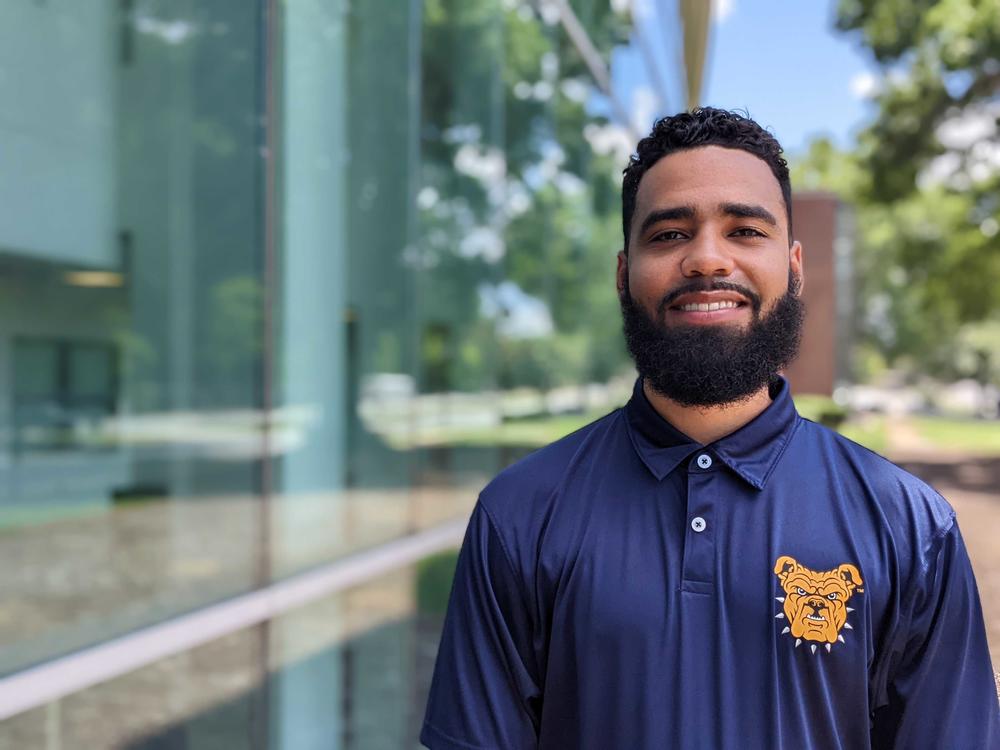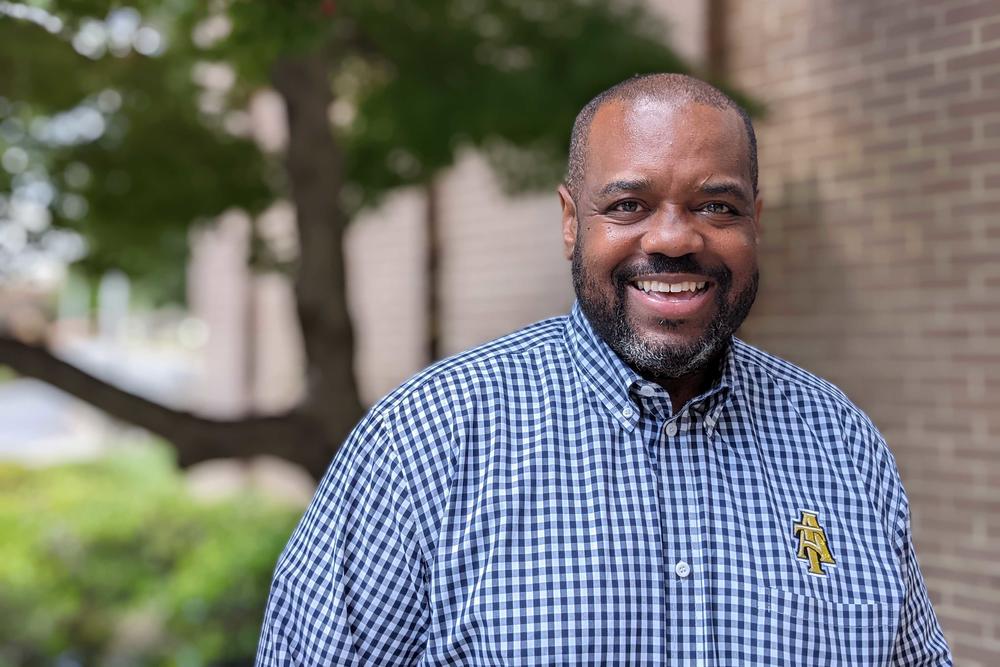Section Branding
Header Content
HBCUs got a windfall of federal COVID relief. Here's how colleges are spending it
Primary Content
Updated September 22, 2022 at 9:00 AM ET
After a couple of difficult semesters during the pandemic, Elijah Love, a computer science major at North Carolina A&T State University (N.C. A&T), was determined to graduate on time.
"Whatever came with that — summer classes, double-load courses — I was willing to do it," Love says.
This summer, that meant continuing to take classes on top of teaching computer science to middle school girls and enrolling in a summer learning program at IBM.
He was prepared to pay for the extra summer credits, but then he got the bill: The classes were free. His school, a historically Black university, had used federal COVID relief funding to pay for the summer courses.
"I got right back on track," Love says. "I thought it was great. It was a great opportunity for the people struggling right now."
HBCUs have long been underfunded by federal and state governments. But this time, because of the way federal COVID relief money was allocated, these schools got a lot of it. For one thing, much of the funding targeted schools that serve more low-income students, which HBCUs do. And there was a whole other pot of money — $5.2 billion — just for HBCUs.
"By far, it's the most amount of money we've ever received," says Kenny Spayd, the business director of Fayetteville State University, a small public HBCU also in North Carolina.
Spayd says the nearly $80 million his university received is equal to more than half of Fayetteville State's annual operating budget.
"So it's been incredibly helpful and transformative, not only for us, but for our students as we navigate this continuing pandemic."
The federal money did come with rules on how it could be spent, but some schools got more than enough to cover those requirements, pay for COVID safety precautions and still have plenty left over.
The money also came with a deadline: It needs to be spent by the end of this school year, June 2023.
HBCUs around the country told NPR they're using the funds in ways that will affect students for years to come, including canceling student debt, upgrading campus infrastructure and helping retain students who struggle because of financial barriers.
Paying for students' housing, food and textbooks
N.C. A&T is the nation's largest HBCU, and it received one of the largest federal relief packages of all HBCUs: $188.6 million, more than the university's current endowment.
It wasn't the only HBCU to offer free summer courses — in fact, all five public HBCUs in the UNC system paid for their students' summer classes this year using federal relief funds.
N.C. A&T also used the funds to grant housing and dining discounts to residential students, and give free iPads to freshmen and free textbooks to all students.
Robert Pompey, N.C. A&T's vice chancellor for business and finance, says these aid programs are helping students start out the school year on the right foot.
"Imagine going to the first day of class, and you not only have textbooks, but you have the iPad with you. Imagine going to your first day of class and your cost of dining and housing has been reduced by $500. That is significant," Pompey says.
According to the school, some students have received more than $4,000 worth of benefits a year.
By reducing the overall cost of attendance, Pompey says, the university is helping students recover both academically and financially.
"When you have the students that are from the most challenging economic circumstances, they're the ones who are the most impacted."
HBCUs weren't the only schools to target students who were struggling financially during the pandemic. In fact, the CARES Act required all schools to put a portion of their aid money directly into the pockets of students who faced financial stress due to COVID.
Giving students a clean financial slate so they can enroll in classes again
Another popular HBCU spending item was canceling students' outstanding balances for tuition, fees, room and board, and other miscellaneous charges they owed their universities. That's because when a student's balance gets too high, they can't enroll in classes again until it's cleared.
At Florida A&M University, students can't enroll if their balance is above $500. The school spent a big chunk of its relief money — more than $60 million of its $195 million relief package — on giving those students a clean slate.
"Those students, you know, thousands of them, were able to stay with us," says Florida A&M University President Larry Robinson. "And that's going to pay off big time."
Fayetteville State, N.C. A&T and Morgan State University in Baltimore also canceled some level of student debt to help current students reenroll. Robinson says, as a result, Florida A&M has already seen a significant increase in its freshman to sophomore year retention rate.
Updating campus buildings and technology
Multiple HBCUs said they used the money to update technology and building infrastructure.
Morgan State University spent about $10 million to upgrade its technology and pivot quickly to online learning. The university outfitted more than 200 classrooms with cameras so students could get a better view of their classes remotely.
"And because we have invested in this technology, we are expanding our online delivery of degree programs," says Sidney Evans, Morgan State's executive vice president for finance.
He says that will help grow the university in the future.
Morgan State also spent more than $25 million to address mold and mildew damage in buildings that were closed for months early in the pandemic. And Fayetteville State is using federal aid to upgrade the HVAC systems in some of its residence halls for better air quality.
Construction projects like these have been popular avenues for relief spending. While most of the federal aid money expires in summer 2023, the federal government is allowing some schools, including HBCUs, to finish approved construction projects beyond that expiration date.
After the relief money runs out, the work continues
Eventually, the federal funding will run out, or hit the spending deadline. Fayetteville State & N.C. A&T are already looking for ways to continue some of these initiatives on a smaller scale, such as giving discounts on summer school and textbooks. Both schools say they see it as an investment that will help uplift students, families and their communities.
"We wake up thinking about, every day, what can we do to make a difference in the lives of our students?" says Pompey of N.C. A&T. "We consider these funds that we've received investments, and we've invested in our students."
Copyright 2022 NPR. To see more, visit https://www.npr.org.
Bottom Content


